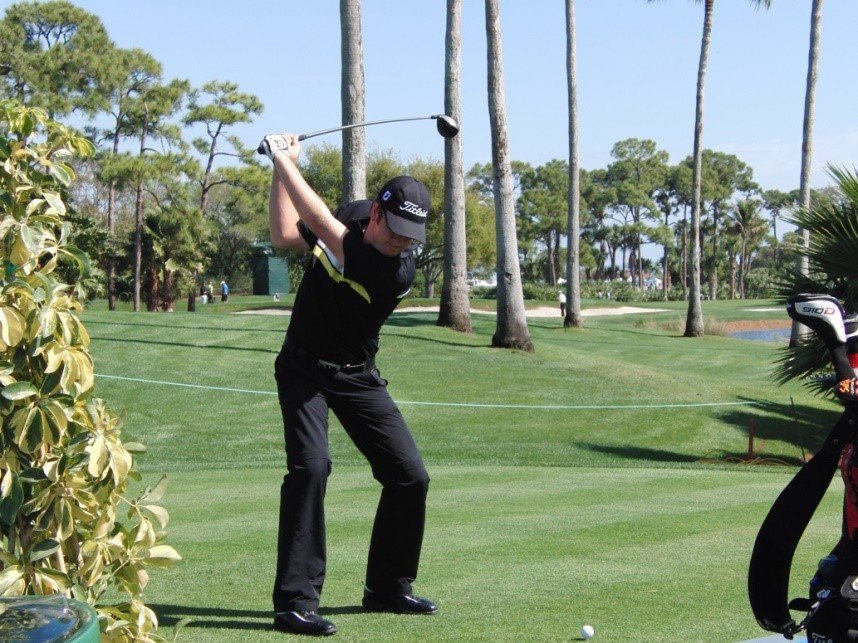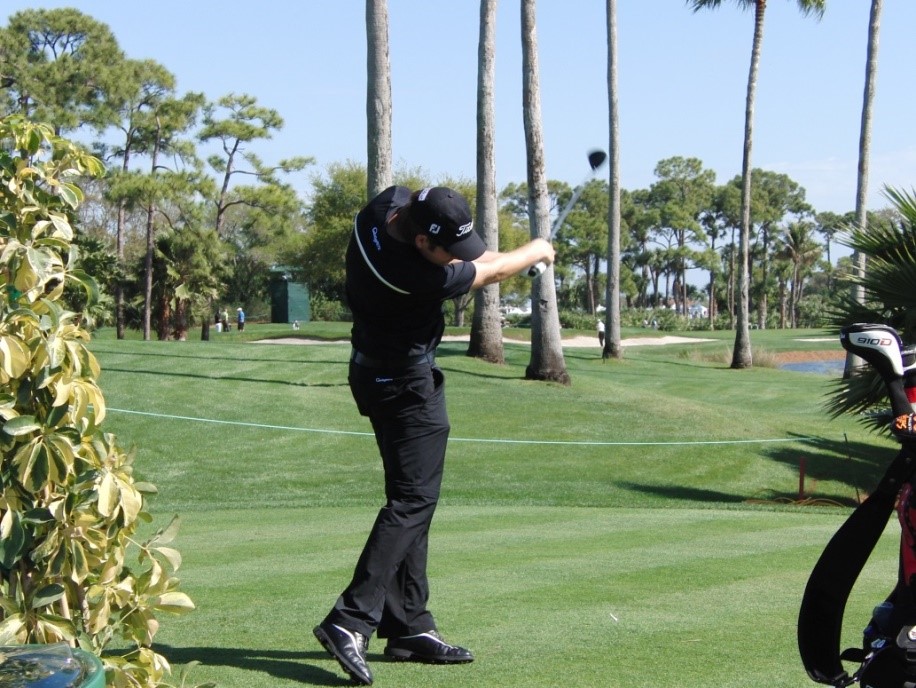Drills for Skills

by Dr. T. J. Tomasi, Keiser University College of Golf Senior Faculty and Director of Research
To promote quiet hands and arms in your swing, you must release your head during the swing. Freezing your head in place forces the hands to flip past the body. I also believe releasing the head reduces strain on the back and neck.
I’m not suggesting that your head move up before the ball is struck. The correct movement pattern occurs when the head rotates softly in the direction of the coil.
Research shows that the head rotates in a good swing because, under the stress of proper coil, it must. In most cases, if the head is not allowed to rotate, you will be forced into a correction, making it difficult to keep the club on plane. So, let your head stay in the center of your shoulders and let it rotate with your body turn.
How much depends on your body build?
For example, if you’re thin-to-medium build and flexible, as many tour players are, then the rotation will be slight. If you’re thick-chested with low flexibility, your head rotation will be noticeable.
This drill will help ensure the proper rotation of the head: Place a second ball about 3 feet in front of the ball you’re going to hit. As you swing back to impact, rotate your head, and look at the second ball rather than the ball you are hitting. Hit enough balls to give you the feel of releasing your chin and shoulders together.

This player’s hat brim is pointing toward his back foot. If he anchors his head here, the force of the downswing will tear at his vertebrae and the soft tissue that surrounds them. While everyone knows how bad the golf swing can be on the back, a fixed head can cause problems in the neck area, as well. An immobile head can be a real pain in the neck.

Here, the brim is pointing in front of the left foot, showing how much the head has swiveled. This tour player has released his head just as he released his arms and shoulders. The misguided advice to keep your head still must have been invented by a chiropractor in need of patients.
If you’d like to study with Dr. Tomasi and other PGA Master Professionals, contact The College of Golf today.















How do I key on the angle of the plane? If I go too high I pull it left, if I’m too low I slice it right! How do I groove the plane angle consistently?